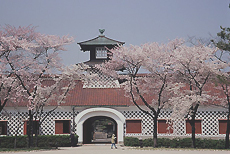Hokkaido Toyako Summit
Venues
After the passing of the Jomon culture, represented in the archeological record by the presence of earthenware vessels with sculpted rims, the countries of Echigo and Sado were established in the Nara Period. At this time, with the boom in gold mining on the island of Sado, the opening up of the westward sea routes and the development of new paddy fields, Niigata grew into one of Japan's most economically powerful and populous regions.
Niigata City has a history of prosperity as the largest port on the Sea of Japan side of the country for shipping to and from the Pacific side. Later, under the Ansei Treaty of 1859 between Japan, the U.S., Russia, Holland, Britain, and France, Niigata became one of just five Japanese ports open to foreign trade (along with Yokohama, Hakodate, Kobe, and Nagasaki). Against the backdrop of this history, in the early years of the Meiji Era, Niigata's population was the largest of any prefecture in Japan.

which Niigata Prefecture is aiming to register
as a World Heritage Site

the only surviving Customs House
among those in the first five ports
opened to foreign trade
(an important national cultural property)